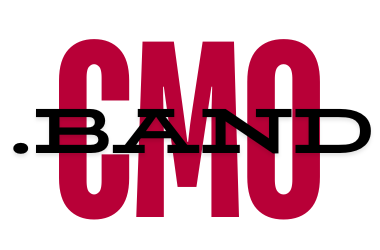Mastering Your Go-to-Market Strategy: How the Business Model Canvas Can Transform Your Approach
In the ever-evolving landscape of digital marketing, the ability to swiftly adapt and strategically approach the market is paramount. One tool that stands out in redefining go-to-market strategies is the Business Model Canvas (BMC). As a digital marketing expert, I’ve witnessed firsthand how this strategic management template aids businesses in aligning their activities by illustrating potential trade-offs in a clear and structured manner. Let’s dive into how the BMC can revolutionize your go-to-market strategy.
Understanding the Business Model Canvas
The Business Model Canvas, developed by Alexander Osterwalder, is a visual chart with elements describing a company’s value proposition, infrastructure, customers, and finances. It assists firms in aligning their activities by illustrating potential trade-offs. The BMC comprises nine key components:
- Value Propositions: What core problem does your product or service solve? How does it improve customer lives?
- Customer Segments: Who are your target customers?
- Channels: Through which outlets will you reach your customer segments?
- Customer Relationships: What type of relationship does each customer segment expect you to establish?
- Revenue Streams: How does the business earn revenue from the value propositions?
- Key Resources: What unique strategic assets must the business have to compete?
- Key Activities: What uniquely strategic things does the business do to deliver its proposition?
- Key Partnerships: Who will the company partner with to leverage external resources?
- Cost Structure: What are the business’s major cost drivers? How are they linked to revenue?
Transforming Your Go-to-Market Strategy with BMC
1. Clearer Value Propositions
In digital marketing, clarity in your value proposition is crucial. The BMC helps you define and refine your value proposition, ensuring it aligns with the needs and wants of your target customer segments. This clarity helps in crafting targeted marketing messages that resonate deeply with potential customers, thereby increasing conversion rates.
2. Enhanced Customer Understanding
The BMC forces you to rigorously define your customer segments. This deep understanding of your audience allows for more effective and targeted marketing strategies. You can tailor your digital marketing efforts to specific demographics, behaviors, and preferences, leading to higher engagement rates.
3. Optimized Channel Strategy
Digital marketing is all about reaching your audience where they are. The BMC helps you identify and evaluate the most effective channels to reach your target customers. Whether it’s social media, email marketing, SEO, or direct sales, understanding the right mix of channels can significantly enhance the effectiveness of your go-to-market strategy.
4. Streamlined Revenue Streams
By using the BMC, you can explore various potential revenue streams. For digital marketers, this could mean diversifying into subscription models, freemium services, or digital products. Understanding these streams can help in crafting offers that maximize earnings while meeting customer expectations and needs.
5. Strategic Resource Allocation
The BMC provides a holistic view of the resources required to execute your strategy effectively. In digital marketing, this could mean allocating budgets more efficiently between content creation, ad spending, and technology investments. By understanding key resources, you can make informed decisions that ensure these assets are aligned with your overall business objectives.
6. Focused Cost Management
Understanding the cost structure is vital in any marketing strategy. The BMC helps you identify the major costs involved in your go-to-market plan. This awareness allows for better budget management and identifies areas where costs can be reduced without compromising on quality or customer satisfaction.
7. Building Beneficial Partnerships
In today’s digital age, partnerships can be a game-changer. The BMC encourages you to identify key partnerships that could leverage your marketing efforts. Whether it’s a technology provider, a distribution channel, or a co-marketing agreement, understanding these relationships can provide a competitive edge.
Implementing BMC in Your Digital Marketing Strategy
To effectively implement the BMC in your digital marketing strategy, start by conducting workshops with your team to fill out each component of the canvas. Encourage open discussion and multiple perspectives to ensure a comprehensive understanding. Once completed, use the canvas as a living document, regularly updating it as your market conditions and business strategies evolve.
Leveraging BMC for Competitive Advantage
In conclusion, the Business Model Canvas is not just a tool for business model generation but a comprehensive framework that can significantly enhance your digital marketing strategies. It provides a macro view of the business elements and micro insights into operational tactics, making it an indispensable tool for any digital marketer aiming to master their go-to-market strategy.
By integrating the BMC into your strategic planning, you can ensure that every aspect of your digital marketing efforts is purpose-driven and aligned with your overall business objectives. This alignment is crucial in today’s competitive environment, where understanding and responding to customer needs quickly and effectively determines market success.

A seasoned digital marketing strategist with over 8 years of experience across various areas of digital marketing, including SEO, SMM, PPC, content marketing, and email marketing. Specializes in transforming B2B, B2C, e-commerce, and SaaS businesses by creating effective go-to-market strategies and building thriving digital ecosystems. Known for a data-driven approach to optimizing campaigns and maximizing results.
“If your business is looking to scale or in need of a fresh perspective, feel free to contact”.


